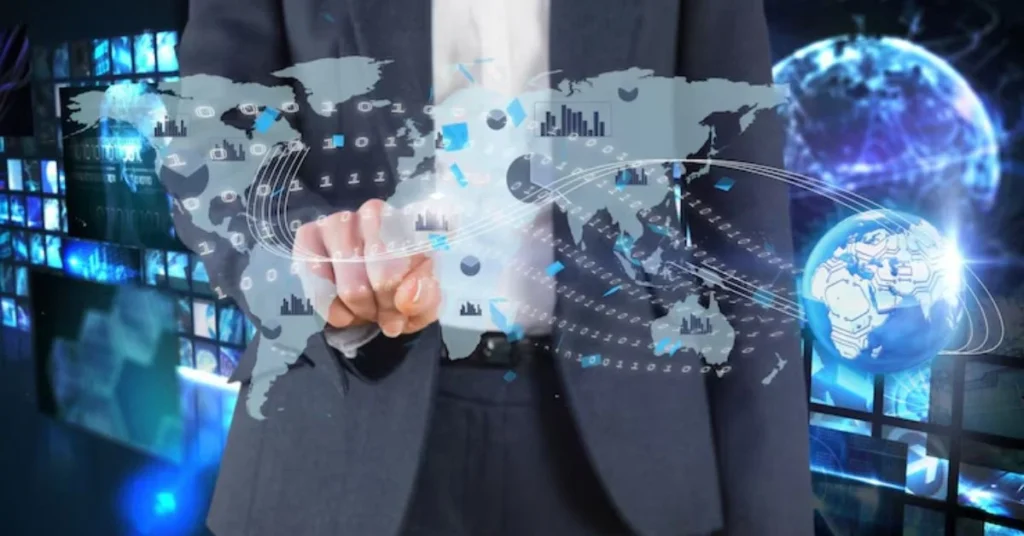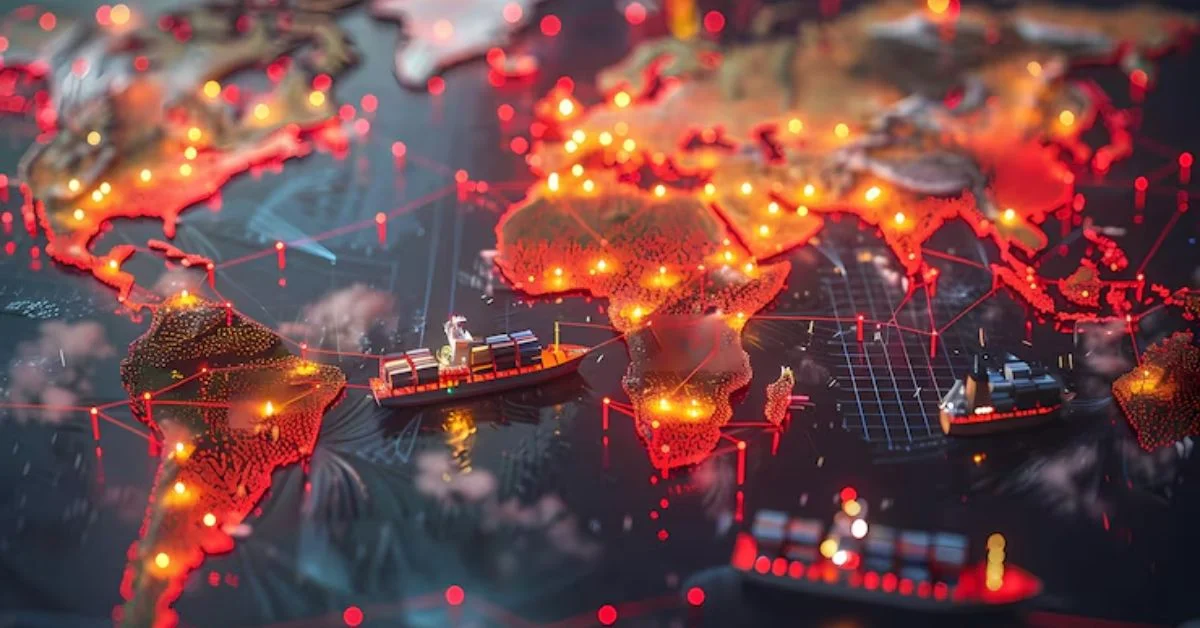The phrase “global supply chain” once evoked images of cargo ships crossing oceans, warehouses stacked with goods, and spreadsheets tracking movement from point A to point B. In 2025, that vision still exists—but it has been fundamentally reshaped. Supply chain management has transitioned from a behind-the-scenes logistical function to a strategic pillar of global business. And the playbook has changed.
This in-depth report examines global supply chain management (GSCM) as it exists today—disrupted, decentralized, digital—and asks what’s next. With a tone and rigor inspired by The New York Times, we map out the major shifts shaping the future of how the world moves goods.
What Is Global Supply Chain Management?
Global Supply Chain Management (GSCM) refers to the coordination of production, shipment, and distribution of products and materials across international boundaries. It encompasses a wide range of processes:
- Procurement and sourcing
- Manufacturing and assembly
- Warehousing and inventory management
- Transportation and logistics
- Compliance and risk management
GSCM is the nervous system of globalization. But in a world reeling from climate change, geopolitical tension, and technological acceleration, it is also undergoing its most profound transformation in decades.
A Brief History: From Efficiency to Resilience
For much of the late 20th and early 21st century, global supply chains prioritized one value above all: efficiency. The goal was to move goods quickly and cheaply. The rise of just-in-time (JIT) manufacturing, pioneered in Japan and adopted globally, epitomized this ethos.
But this model proved brittle. The COVID-19 pandemic shattered supply chains. Raw materials dried up. Shipping containers were stranded. Even multinational giants found themselves unable to fulfill orders.
2025 is different. Today, global supply chains are being redesigned with three new priorities:
- Resilience
- Transparency
- Sustainability
Key Trends in Global Supply Chain Management Today
1. Digital Twins and Predictive Analytics
More than just a buzzword, digital twin technology—virtual replicas of physical supply chain systems—now allow companies to simulate disruptions and optimize routes in real time. These tools combine IoT data from warehouses and vehicles with AI algorithms that anticipate bottlenecks before they occur.
Use Case: A pharmaceutical company uses a digital twin to re-route temperature-sensitive vaccine shipments away from a heat wave-affected region, preserving inventory and patient safety.
2. Nearshoring and Regionalization
In response to geopolitical shocks (such as tariffs, wars, or sanctions), companies are moving production closer to end markets. This shift from global to regional supply chains—nearshoring—has helped firms reduce shipping times and mitigate risk.
Example: U.S.-based electronics manufacturers are investing in factories in Mexico rather than relying exclusively on China.
3. ESG Metrics in Procurement
Environmental, Social, and Governance (ESG) factors are no longer optional. Suppliers are now rated not just on price, but on carbon impact, labor practices, and ethical sourcing. Governments and consumers alike are demanding visibility into the full supply chain.
Emerging Standard: ISO 20400 is becoming the baseline for sustainable procurement.
4. Blockchain for Traceability
Blockchain technology has moved from pilot to implementation in many supply networks. It enables secure, immutable records of product origin and journey, helping combat fraud and ensure compliance.
Real-World Application: Coffee cooperatives in Latin America are using blockchain to track beans from farm to cup, increasing farmer revenues through verified fair trade claims.
5. AI and Autonomous Logistics
Artificial intelligence is optimizing everything from inventory restocking to port scheduling. In major hubs like Rotterdam and Singapore, AI-driven cranes and autonomous cargo vehicles are reducing turnaround times.
Futuristic Now: Drones and automated guided vehicles (AGVs) are handling last-mile delivery in smart cities across Asia.
6. Supply Chain Risk Management (SCRM)
Risk modeling has become a core competency. New software platforms aggregate global data—weather, political instability, labor strikes—to give supply chain managers risk dashboards with real-time alerts.
Notable Vendors: Resilinc, Everstream, and Riskmethods are leading this space.

Labor, Talent, and Automation
The human dimension remains crucial. While automation is replacing repetitive roles, new jobs are emerging:
- Data analysts specializing in supply chain metrics
- Cybersecurity experts for supply chain integrity
- Sustainability officers focused on Scope 3 emissions (indirect emissions across the chain)
Training programs are rapidly evolving. Institutions like MIT and the Technical University of Munich are offering digital supply chain MBAs with a focus on AI and international regulation.
Climate Change and Supply Chain Adaptation
No discussion of GSCM is complete without climate. Droughts, floods, and extreme temperatures are disrupting transport routes and altering sourcing strategies.
Examples:
- Rail lines in Germany delayed due to heat-distorted tracks
- Sea shipping routes altered due to low water levels in the Panama Canal
Companies are responding by: Global Supply Chain Management
- Investing in carbon-neutral shipping
- Using adaptive packaging that can handle temperature swings
- Mapping suppliers’ climate vulnerability zones
Trade Policy and Geopolitical Flux
The resurgence of economic nationalism is impacting how goods flow. Trade agreements are being renegotiated. Sanctions and export controls are reshaping sourcing decisions.
Recent Developments:Global Supply Chain Management
- The African Continental Free Trade Area (AfCFTA) is boosting intra-African logistics investment
- U.S.-India partnerships are growing in the electronics and pharma sectors
- China’s Belt and Road Initiative is under increased scrutiny in the EU
Multinational corporations must now juggle compliance with multiple overlapping trade regimes—often in flux.
Decentralized Supply Networks
We are seeing a shift from hub-and-spoke to mesh models in supply networks. Decentralized systems—where multiple production and distribution nodes support each other—are more robust.
Technology such as edge computing enables local decision-making without reliance on a single data center.
This is especially critical in sectors like healthcare and food, where time-sensitive distribution cannot depend on distant command centers.
Case Study: Rebuilding After Disruption
Company: ZeonTextiles
Industry: Apparel Manufacturing
Challenge: COVID-19 shutdowns and shipping delays left them unable to meet spring orders in 2021.
Solution: By 2023, ZeonTextiles restructured its supply chain using Horizonsoft.net’s ERP platform. They adopted nearshoring in Vietnam, deployed AI forecasting tools, and partnered with local cooperatives.
Outcome: Order fulfillment improved 34%, lead times dropped by 22%, and the company began reporting emissions per SKU—a key demand from its largest European buyer.
The Rise of Ethical Supply Chains
Consumers are demanding more than fast delivery. They want ethics.
Key Developments: Global Supply Chain Management
- Digital product passports
- Third-party labor audits
- Real-time emissions tracking
Platforms like Sourcemap and EcoVadis are making supply chain ethics measurable, not just aspirational.
The Circular Economy Challenge
The supply chain doesn’t end at delivery. Companies must now account for product return, recycling, and reuse.
Circular logistics includes:
- Reverse logistics infrastructure
- Take-back schemes
- Modular product design
Example: Appliance manufacturers in Europe are required to provide spare parts for 10 years and design units that can be disassembled.
Looking Ahead: GSCM in 2030 and Beyond
What trends are likely to dominate the next five years?
- Quantum computing could transform logistics optimization models
- Space-based tracking via satellite constellations will offer global visibility in real time
- Cross-border digital currencies may simplify international trade settlement
- Synthetic biology may localize raw material production (e.g., lab-grown leather or engineered timber)
These are not science fiction—they are active R&D areas.
Final Thoughts: Global Supply Chain Management
Global supply chain management is no longer about moving goods. It’s about managing complexity. In 2025, companies that succeed in GSCM are those that treat it as a strategic function, not just a cost center.
They are data literate, sustainability-focused, geopolitically savvy, and technologically agile. They know that resilience isn’t built in a boardroom—it’s engineered across borders, warehouses, and loading docks.
As the world grows more unpredictable, GSCM will only grow more central. Whether through AI dashboards or blockchain ledgers, the future belongs to those who can see the whole picture—and still deliver on time.
In the end, supply chains are not just about products. They are about people, systems, and the fragile yet profound act of coordination in a fractured world.
For more information, click here.









